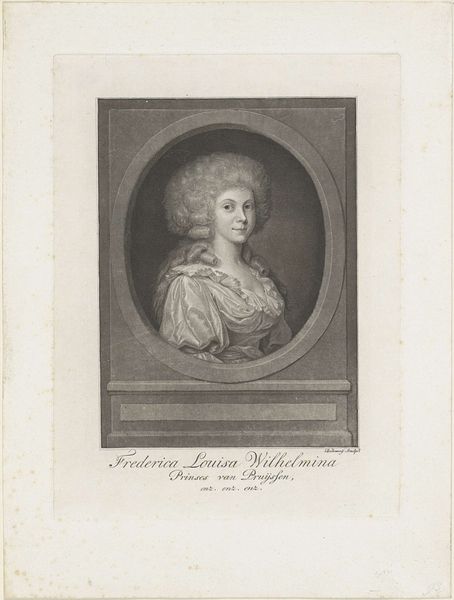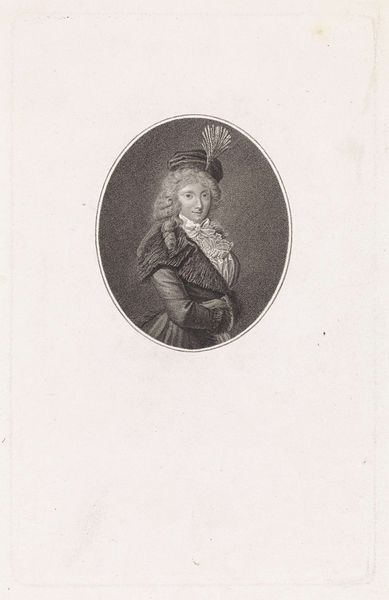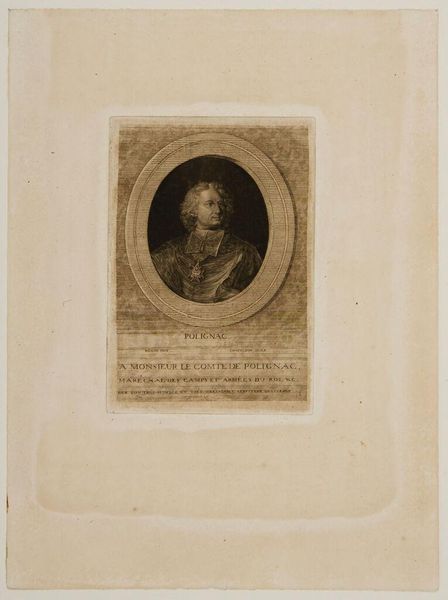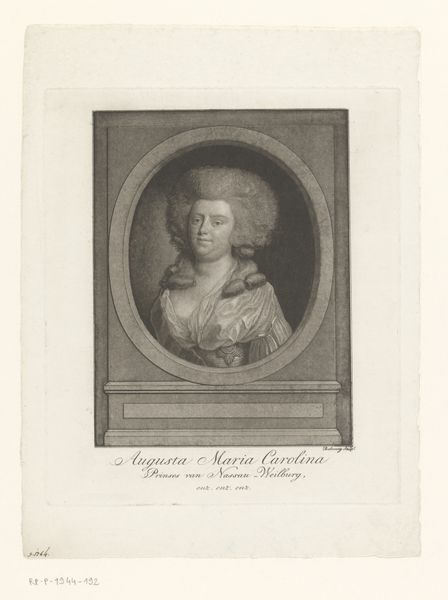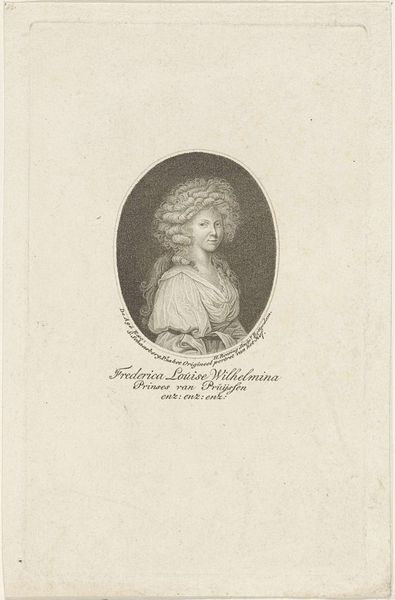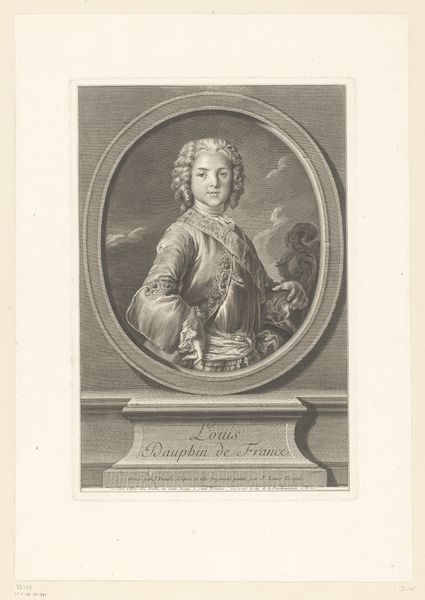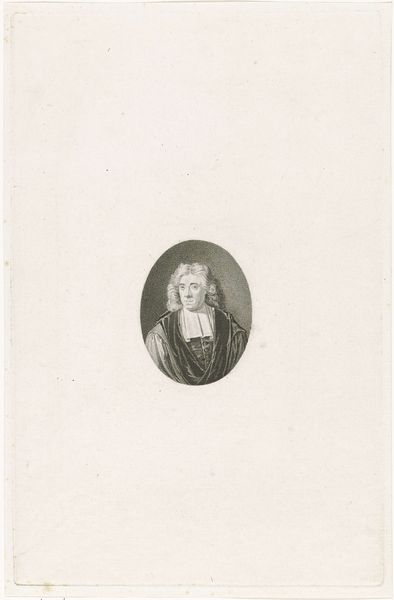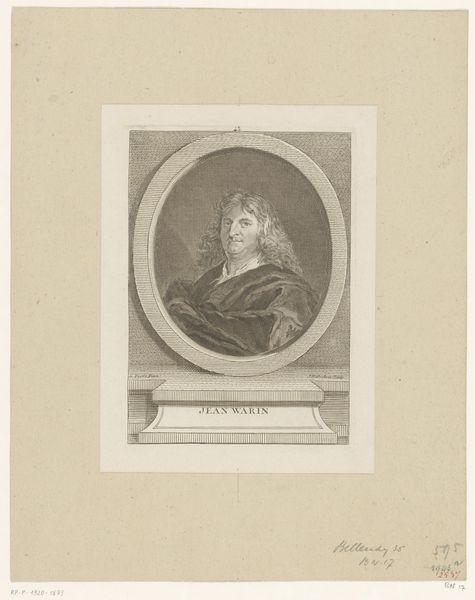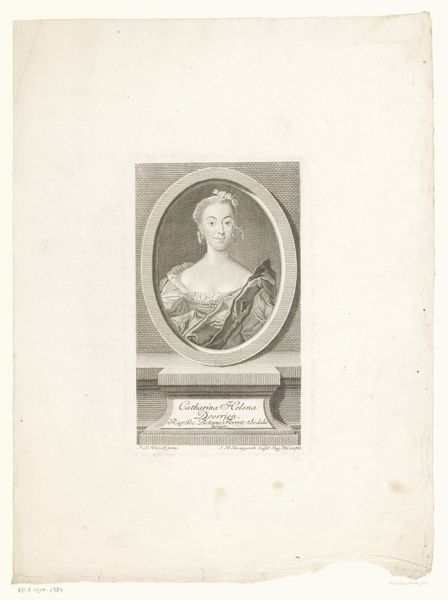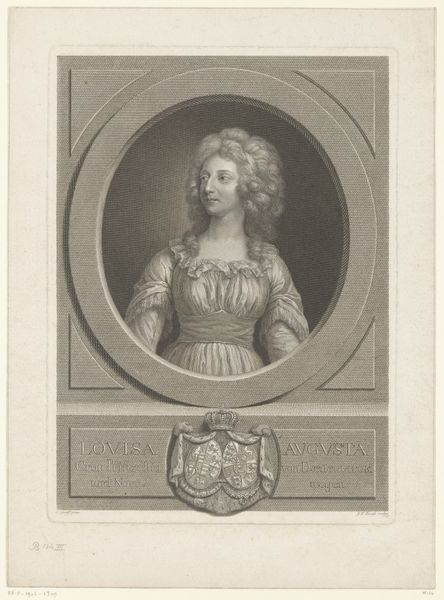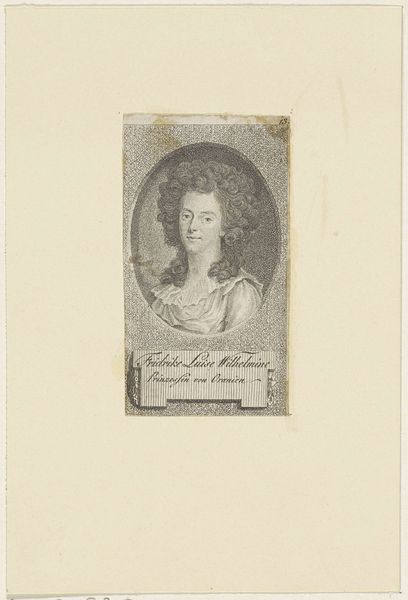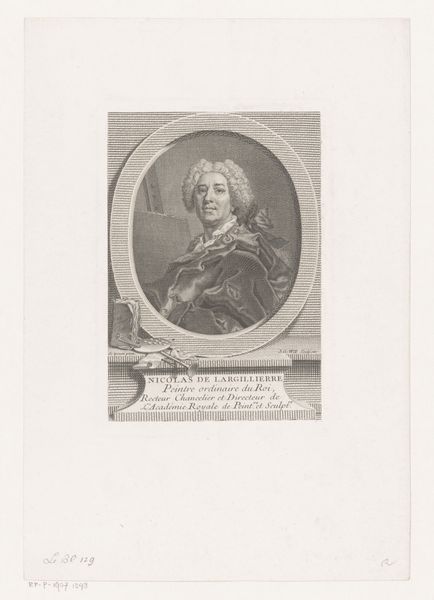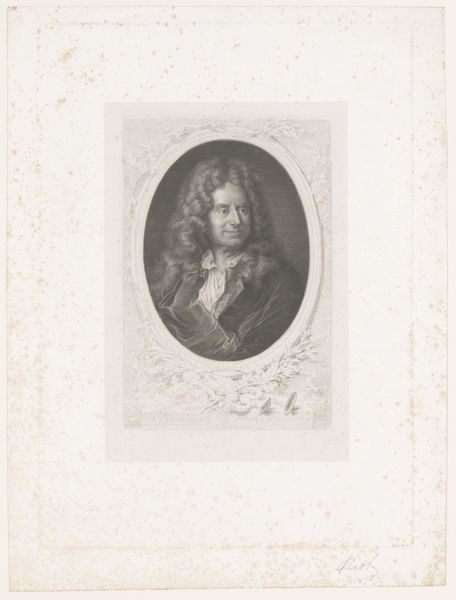
Portret van Elisabeth Philippine Marie Helene, prinses van Frankrijk 1805
0:00
0:00
#
pencil drawn
#
photo of handprinted image
#
light pencil work
#
photo restoration
#
pencil sketch
#
light coloured
#
old engraving style
#
pencil drawing
#
pencil work
#
graphite
Dimensions: height 240 mm, width 162 mm
Copyright: Rijks Museum: Open Domain
Curator: Looking at this restrained portrait, I am struck by its somber elegance. Editor: Somber is definitely a key word. It has a weight to it, doesn’t it? There’s an almost spectral quality, despite its precise rendering. Curator: It’s a pencil drawing titled "Portret van Elisabeth Philippine Marie Helene, prinses van Frankrijk," made by Ludwig Gottlieb Portman in 1805. Considering Elisabeth's biography, the somber mood resonates profoundly. She was guillotined during the French Revolution, you know. Editor: Ah, that explains so much! The oval frame, the careful detail... It reminds me of mourning jewelry, those miniature portraits people would wear to remember the deceased. Her severe hairstyle towering above hints to me about the rigid constraints of royal expectations, too. Curator: Precisely. The iconography of portraiture then served specific social functions. Think of the display of power and lineage. Even in its simplicity, it signifies rank. The empty plaque beneath her image is telling; a space meant for naming that remains void. I think that omission is rather striking considering her fate and the revolution. Editor: Definitely, there is a strange power dynamic at play in these formal depictions. But it feels especially potent knowing her fate, as you mentioned. Is there any significance, do you think, in the type of frame depicted, with an outer, rectangular edge framing the oval cameo? Curator: Interesting question. I am drawn to its subtle reinforcement of the social construction and even imprisonment, of her identity. While the oval evokes classicism, its confinement within a stark rectangle speaks, to me, of imposed limits and controlled presentation. The image gives the impression of preservation, but hints at a coming erasure. Editor: This discussion really reshapes my understanding of its composition and tone. Initially, I viewed it as a conventional piece but seeing how her life infuses the work with complex meaning brings a new appreciation for the piece. Curator: Agreed. By delving into the social contexts and visual symbolism, even this understated portrait offers a poignant commentary on identity, power, and loss within revolutionary history.
Comments
No comments
Be the first to comment and join the conversation on the ultimate creative platform.

